An Image Compression Scheme in Wireless Multimedia Sensor Networks Based on NMF
Abstract
:1. Introduction
- Energy consumption and resource requirements: The key issue in WSNs is energy consumption, as recognized by research scholars. The process of wireless transmission and reception consumes the largest part of the energy in traditional WSNs. However, sensors in most WSNs are typically battery-powered, and batteries are usually infeasible in terms of being recharged or even replaced [3]. In WMSNs, sensor nodes will collect much other video and image data and consume large amounts of energy. Meanwhile, compared to conventional WSNs, since the collected audio and image information constitute a large amount of data, the bandwidth required for transmission is wider.
- Local processing: WMSNs can be employed in the local image processing methods to reduce the amount of data among networks, such as simple image processing algorithms for background extraction from moving targets, or complex algorithms for feature extraction or scenario inference. Which algorithm to use and what level of complexity required is determined by physical conditions. For example, if you want to get information from the environment, we can use the low-level difference algorithm for edge detection [4]. If you also need a higher-level image processing mode, then we can apply complex algorithms to classify the collected targets in a basic manner.
2. NMF Method and Network Model
2.1. NMF Method
- Euclidean distance:Euclidean distance is more suitable for channels with Gaussian noise.
- General Kullback-Leibler distance:General Kullback-Leibler distance is more suitable for channels with Additive Poisson noise.
- Bregman distance:Especially, if , Bregman distance is equivalent to Euclidean distance. If , Bregman distance is equivalent to General Kullback-Leibler distance.
- Csiszár distance:
| Algorithm 1. Adaptive Non-Linear Sampling Algorithm. |
| 1: Initialize 2 non-negative matrices B, C; |
| 2: First, set matrix C as a constant value, solve the Non-Negative Least Squares Problem with matrix B. Record the calculating times used above as m so matrix B consists of m optimal solutions ultimately. |
| 3: Then, set matrix B as a constant value similarly, solve the Non-Negative Least Squares Problem with matrix C. Record the calculating times used above as n so matrix C consists of n optimal solutions ultimately. |
| 4: If matrix B, C meet the requirements of stopping Least Square algorithm, then finish the calculation. Else, turn to Step 2. |
2.2. Network Topology Structure
- Node ID numbers are not allowed to be duplicated in the network, and each node has a unique identity. All nodes must ensure time synchronization after being deployed;
- The camera nodes are deployed fixedly and different camera nodes must monitor different areas which have no duplicate parts, i.e., the distance between two cameras must be at least two nodes radius and a wireless communication connection;
- The ordinary nodes are deployed randomly around the camera nodes with large density in order to make sure that the camera nodes can be connected to the neighboring ordinary nodes in a communication range.
- The camera nodes are placed in the center of the monitoring range. Then, each ordinary node which could be connected is structured to a cluster;
- A cluster head node should be selected in the cluster composed. Requirements are: to establish the best quality route to communicate with the base station, and to ensure adequate energy reserve. Assuming that the initial energy reserves of all nodes are basically the same, the node which is nearest to the base station is usually selected as the cluster head node;
- The cluster head nodes use broadcast channels to inform their ID numbers and camera node ID numbers to ordinary nodes within the cluster;
- Each ordinary node then sends their ID numbers to the camera nodes and cluster head nodes;
- The cluster head nodes and camera nodes record all ID numbers received.
2.3. Network Energy Consumption Model
3. Adaptive Blocking Image Compression Mechanism Based on the NMF Method
3.1. Adaptive Blocking Image Compression Algorithm Based on the NMF
| Algorithm 2. Adaptive blocking image compression method based on the NMF. |
| 1: V = Block (Origin Figure); // V is a divided piece from original image; |
| 2: Set rank r of decomposition matrix; |
| 3: Set initial value of W = V (:, 1: r), H = V (1: r, :); // initial base W, factor H; |
| 4: Iteration: |
| 5: If , or the execution time T exceeds the limit value , the iteration is terminated. Otherwise, go to Step 4; |
| 6: Restoration of image matrices after compression: |
3.2. Collaborating Image Compression Scheme
- Camera nodes are the brain of the whole network. A complete cluster structure will be established. Then the block numbers and the size of image will be determined by this structure. Camera nodes will transmit data to ordinary nodes after setting an appropriate probability for next step;
- Ordinary nodes execute image compression based on the NMF method. All ordinary nodes within a cluster will execute adaptive compression based on the NMF method respectively once getting original image data from the camera. Then, they send the results directly to the cluster head node. At the same time, ordinary nodes continue to listen to the channel and do compression work continuously if there are new image blocks transmitted from camera nodes;
- Cluster head nodes only collect data without integration. The head nodes receive not only image data but also location information from ordinary nodes. So, the head nodes have no need to process the data and just transmit them to the base station. As the base station reserves adequate energy, we select it to integrate image data compressed to reduce energy consumption of the whole network.
4. Simulation Experiments
4.1. Relative Parameters in Simulation Experiment
4.2. Analysis of Simulation Results
4.2.1. Impact on Compression Mechanism Caused by Image Blocks
4.2.2. Impact on Compression Mechanism Caused by Iterations
4.3. Compression with Other Methods
4.3.1. Analysis of Energy Consumption
4.3.2. Quality of Image Restoration
5. Conclusions
Acknowledgments
Author Contributions
Conflicts of Interest
References
- Akyildiz, I.F.; Melodia, T.; Chowdhury, K.R. A survey on wireless multimedia sensor networks. Comput. Netw. 2007, 51, 921–960. [Google Scholar] [CrossRef]
- Gurses, E.; Akan, O.B. Multimedia communication in wireless sensor networks. Ann. Telecommun. 2005, 60, 799–827. [Google Scholar]
- Wei, Z.; Wang, F. A Novel Negative Multinomial Distribution Based Energy-Efficient Reputation Modeling for Wireless Sensor Networks (WSNs). J. Donghua Univ. (Eng. Ed.) 2012, 29, 153–156. [Google Scholar]
- Xiong, Z.Y. Study of Image Coding Algorithm for Wireless Multimedia Sensor Networks. Ph.D. Thesis, Central South University, Changsha, China, 2012. [Google Scholar]
- Addisu, A.; Sciandra, V.; Agueh, M.; George, L. Work in progress: Analytic hierarchy process applied to JPEG2000 video streaming over Wireless Multimedia Sensor Networks. In Proceedings of the IEEE 2014 9th International Conference on Communications and Networking in China (CHINACOM), Maoming, China, 14–16 August 2014; pp. 361–364.
- Han, C.; Sun, L.; Xiao, F.; Guo, J.; Wang, R. Image compression scheme in wireless multimedia sensor networks based on SVD. J. Southeast Univ. (Nat. Sci. Ed.) 2012, 42, 814–819. [Google Scholar]
- Lee, D.D.; Seung, H.S. Learning the parts of objects by non-negative matrix factorization. Nature 1999, 401, 788–791. [Google Scholar] [PubMed]
- Wang, J.; Du, H.; Hou, Y.; Jin, Y. Graph embedding projective non-negative matrix factorization method for image feature extraction. Comput. Sci. 2014, 41, 311–315. (In Chinese) [Google Scholar]
- Zhang, W.; Guan, N.; Tao, D.; Mao, B.; Huang, X.; Luo, Z. Correntropy supervised non-negative matrix factorization. In Proceedings of the IEEE 2015 International Joint Conference on Neural Networks (IJCNN), Killarney, Ireland, 12–17 July 2015; pp. 1–8.
- Donoho, D.L.; Stodden, V. When does non-negative matrix factorization give a correct decomposition into parts? In Advances in Neural Information Processing Systems 16 (NIPS 2003); MIT Press: Cambridge, MA, USA, 2003. [Google Scholar]
- Kumar, A.; Sindhwani, V.; Kambadur, P. Fast Conical Hull Algorithms for Near-separable Non-negative Matrix Factorization. JMLR W&CP 2013, 28, 231–239. [Google Scholar]
- Lee, D.D.; Seung, H.S. Algorithms for non-negative matrix factorization. In Advances in Neural Information Processing Systems 13; MIT Press: Cambridge, MA, USA, 2001; pp. 556–562. [Google Scholar]
- Lin, C.J. Projected gradient methods for non-negative matrix factorization. Neural Comput. 2007, 19, 2756–2779. [Google Scholar] [CrossRef] [PubMed]
- Huang, K.; Sidiropoulos, N.; Swami, A. Non-negative matrix factorization revisited: Uniqueness and algorithm for symmetric decomposition. IEEE Trans. Signal Process. 2014, 62, 211–224. [Google Scholar] [CrossRef]
- Wang, K.-J.; Zuo, C.-T. Improvements of non-negative matrix factorization for image extraction. Appl. Res. Comput. 2014, 31, 4. (In Chinese) [Google Scholar]
- Ehsan, S.; Hamdaoui, B. A survey on energy-efficient routing techniques with QoS assurances for wireless multimedia sensor networks. IEEE Commun. Surv. Tutor. 2012, 14, 265–278. [Google Scholar] [CrossRef]
- Heizelman, W.; Chandrakasan, A.; Balakrishman, H. Energy-Efficient communication protocol for wireless microsensor networks. In Proceedings of the Hawaiian International Conference on System Science (HICSS), Maui, HI, USA, 4–7 January 2000; IEEE Press: Washington, DC, USA, 2000; pp. 3005–3014. [Google Scholar]
- Wang, A.; Chandrakasan, A. Energy-efficient DSPs for wireless sensor networks. IEEE Signal Process. Mag. 2002, 19, 68–78. [Google Scholar] [CrossRef]
- Jin, Y.; Wang, L.; Yang, X.; Wen, D. Energy Consumption in Wireless Sensor Networks. J. Donghua Univ. (Eng. Ed.) 2007, 24, 646–651. [Google Scholar]
- Wheeler, F.W.; Pearlman, W.A. SPIHT image compression without lists. In Proceedings of the IEEE 2000 International Joint Conference on Acoustics, Speech, and Signal Processing (ICASSP’00), Istanbul, Turkey, 5–9 June 2000; Volume 42, pp. 2047–2050.
- Lu, Q.; Luo, W.S.; Hu, B. Multi-node cooperative JPEG2000 implementation based on neighbor clusters in wireless sensor networks. Opt. Precis. Eng. 2010, 18, 240–247. (In Chinese) [Google Scholar]
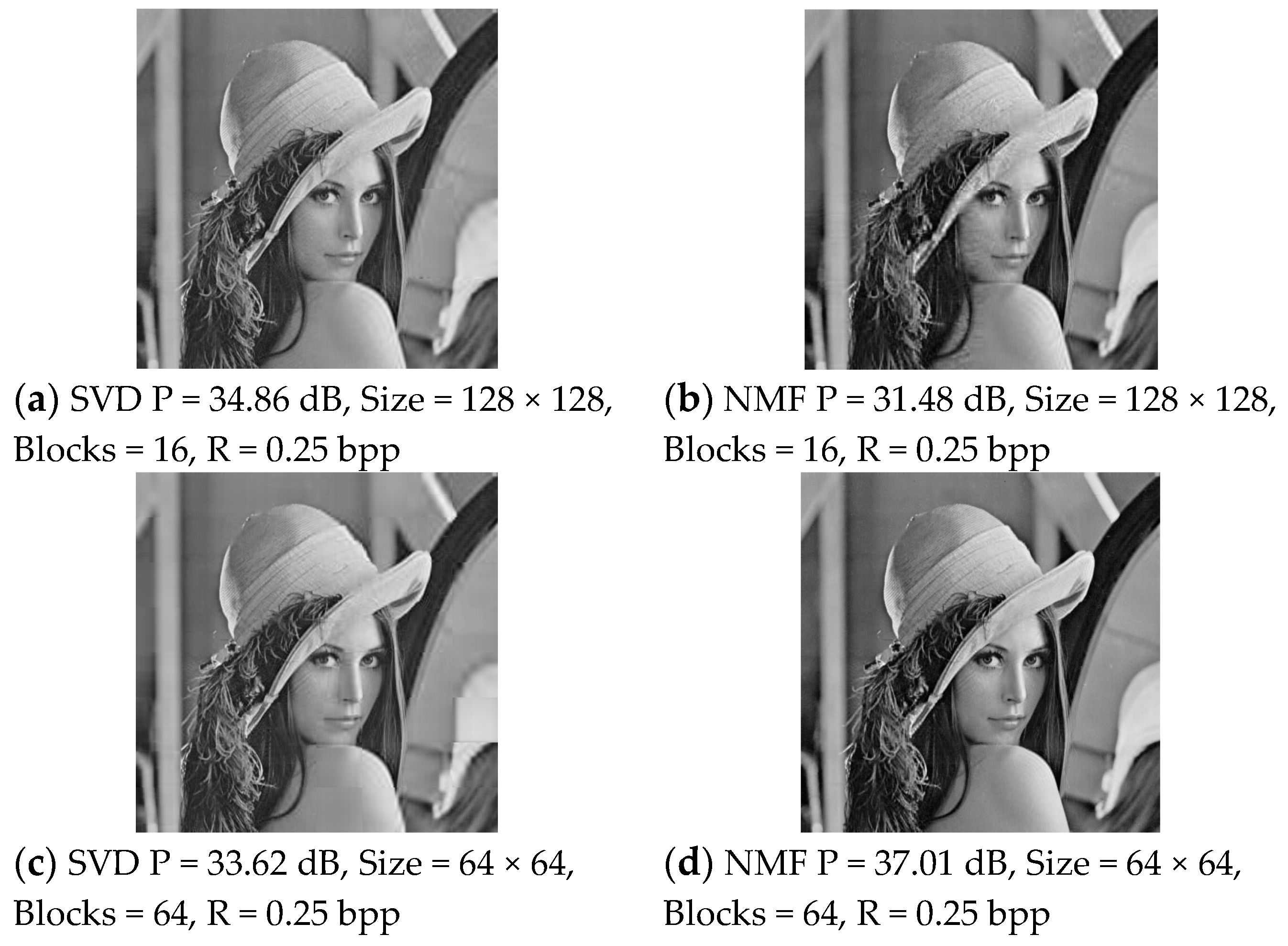
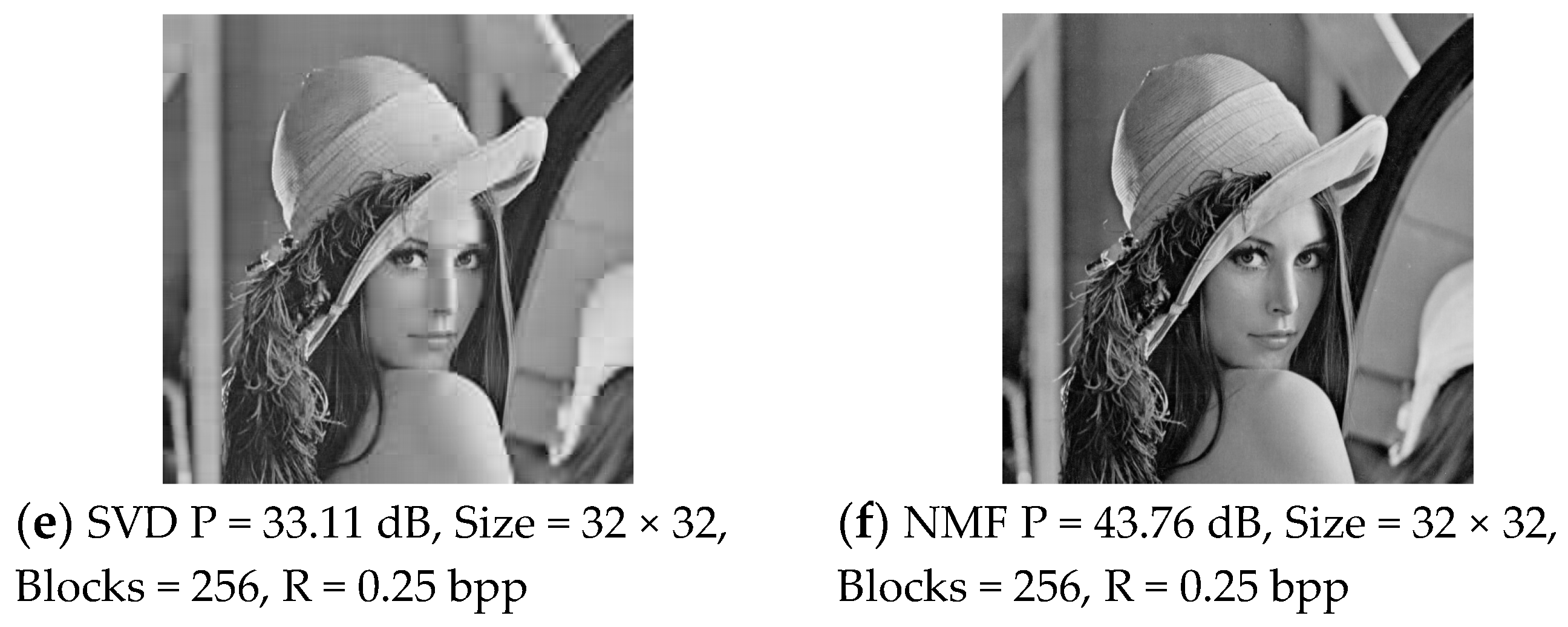

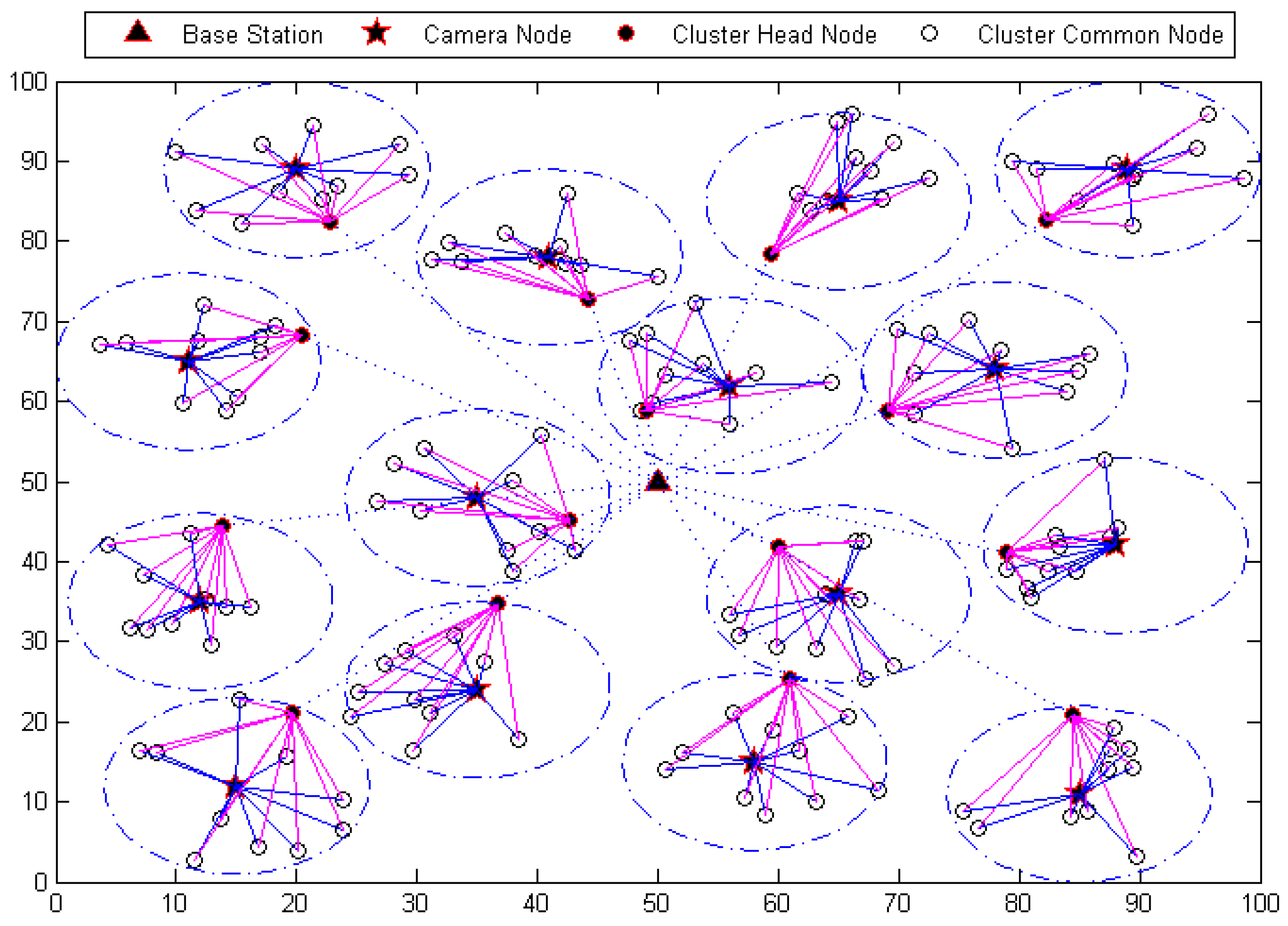

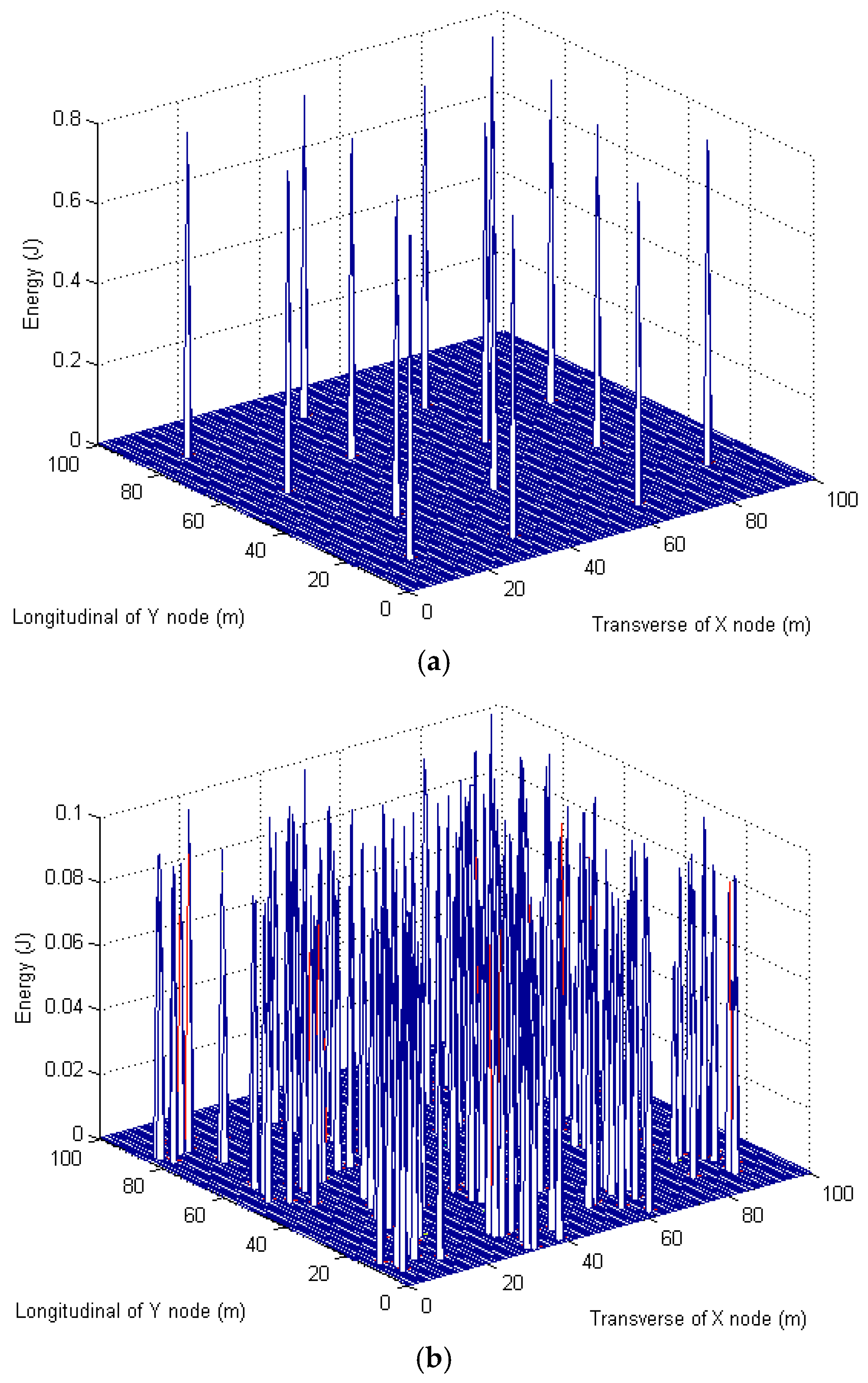
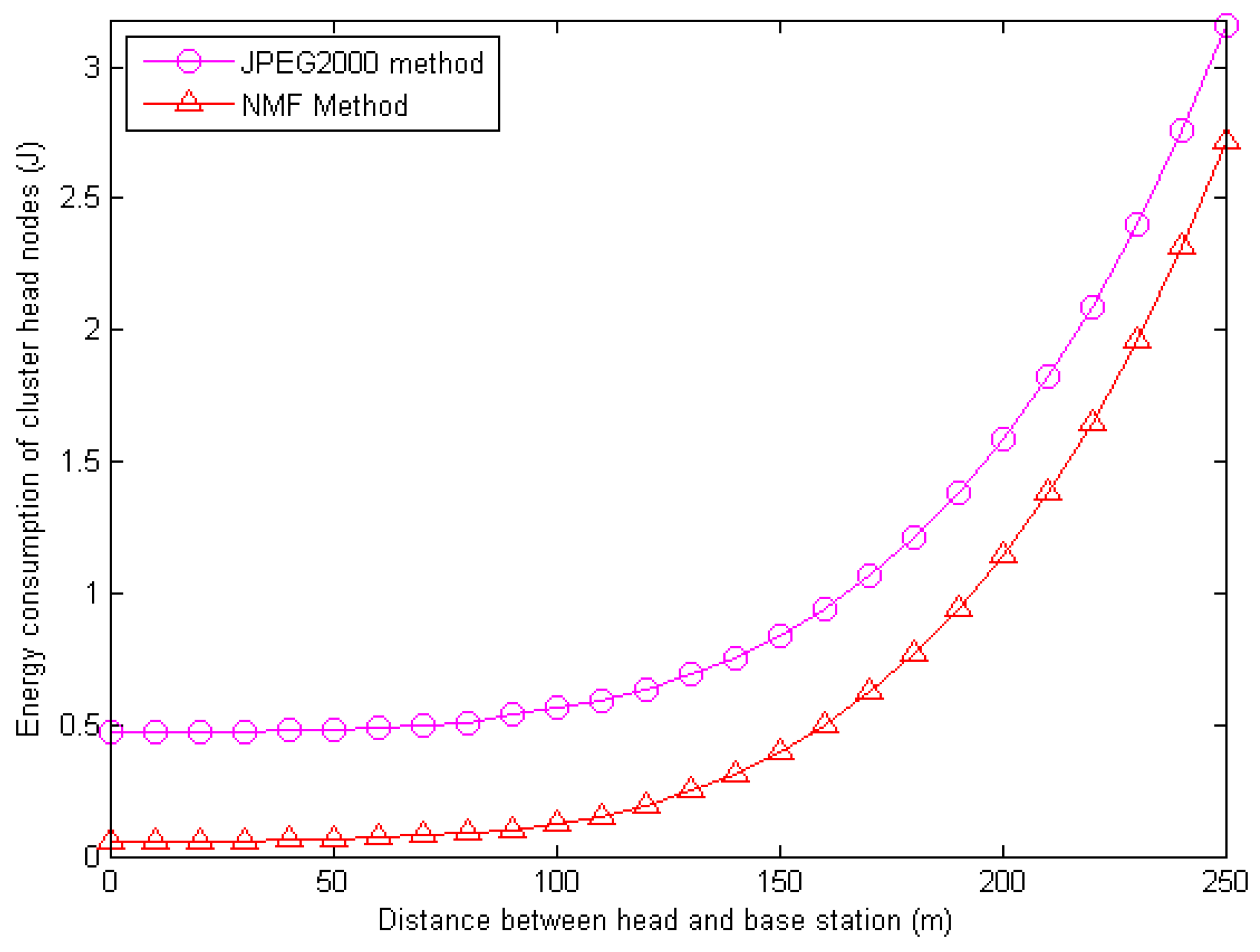
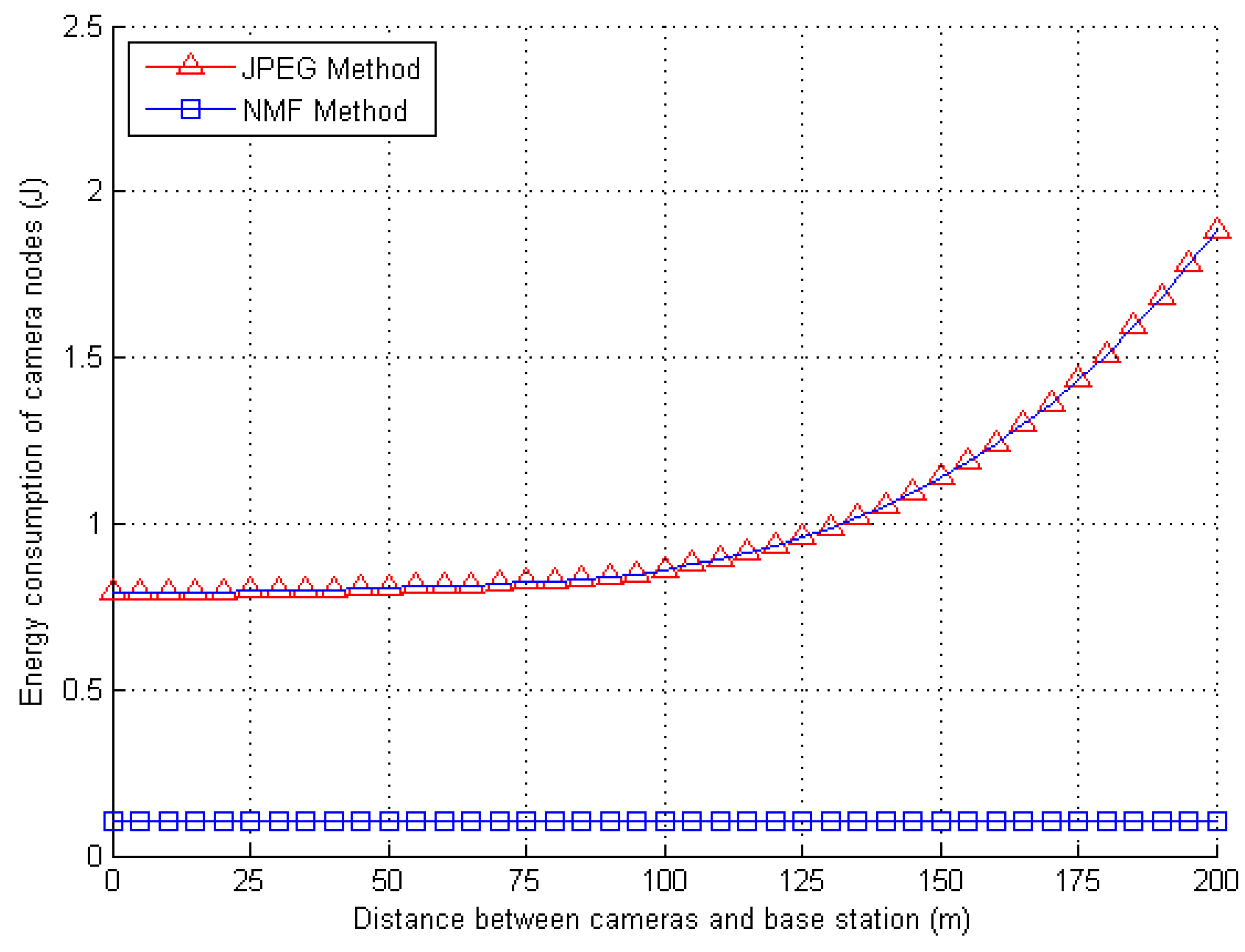
| I = 1000 | I = 5000 | I = 10000 | |||
|---|---|---|---|---|---|
| B | P (dB) | B | P (dB) | B | P (dB) |
| 4 | 26.88 | 4 | 27.12 | 4 | 27.13 |
| 16 | 31.18 | 16 | 31.45 | 16 | 31.48 |
| 64 | 36.36 | 64 | 36.92 | 64 | 37.02 |
| 256 | 43.76 | 256 | 45.63 | 256 | 45.93 |
| I | P (dB) | I | P (dB) |
|---|---|---|---|
| 100 | 32.04 | 3000 | 36.81 |
| 120 | 32.70 | 4000 | 36.89 |
| 150 | 33.39 | 5000 | 36.92 |
| 180 | 33.89 | 6500 | 36.96 |
| 200 | 34.18 | 8000 | 37.00 |
| 300 | 34.97 | 9000 | 36.99 |
| 500 | 35.81 | 10000 | 37.01 |
| 750 | 36.14 | 11,500 | 37.05 |
| 1000 | 36.36 | 12,000 | 37.03 |
| 2000 | 36.69 | 15,000 | 37.04 |
| B | I | NMF (dB) | SVD (dB) | SPIHT (dB) |
|---|---|---|---|---|
| 64 | 100 | 32.04 | 33.62 | 33.72 |
| 150 | 33.39 | |||
| 200 | 34.18 | |||
| 300 | 34.97 | |||
| 500 | 35.81 | |||
| 256 | 10 | 24.83 | 33.11 | |
| 30 | 30.44 | |||
| 50 | 33.34 | |||
| 75 | 35.38 | |||
| 100 | 36.77 |
© 2017 by the authors. Licensee MDPI, Basel, Switzerland. This article is an open access article distributed under the terms and conditions of the Creative Commons Attribution (CC BY) license ( http://creativecommons.org/licenses/by/4.0/).
Share and Cite
Kong, S.; Sun, L.; Han, C.; Guo, J. An Image Compression Scheme in Wireless Multimedia Sensor Networks Based on NMF. Information 2017, 8, 26. https://doi.org/10.3390/info8010026
Kong S, Sun L, Han C, Guo J. An Image Compression Scheme in Wireless Multimedia Sensor Networks Based on NMF. Information. 2017; 8(1):26. https://doi.org/10.3390/info8010026
Chicago/Turabian StyleKong, Shikang, Lijuan Sun, Chong Han, and Jian Guo. 2017. "An Image Compression Scheme in Wireless Multimedia Sensor Networks Based on NMF" Information 8, no. 1: 26. https://doi.org/10.3390/info8010026






